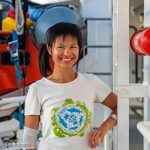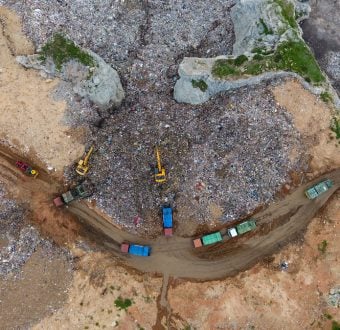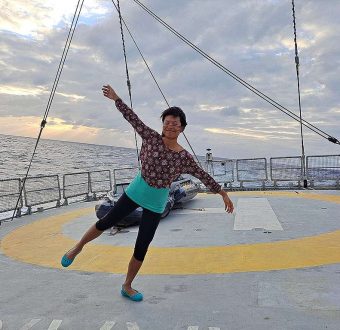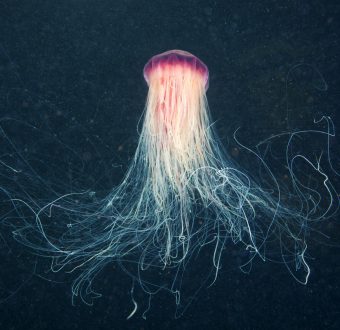We were sailing from the Caribbean to the Pacific. We queued up for two days before crossing the Canal, due to the ship traffic. The actual crossing took 9 hours from 4pm to 1am in the morning. As we arrived at the Pacific side, we took half of a day to do maintenance of the masts. All in all, it took us 3 whole days until we set sail into the Pacific.
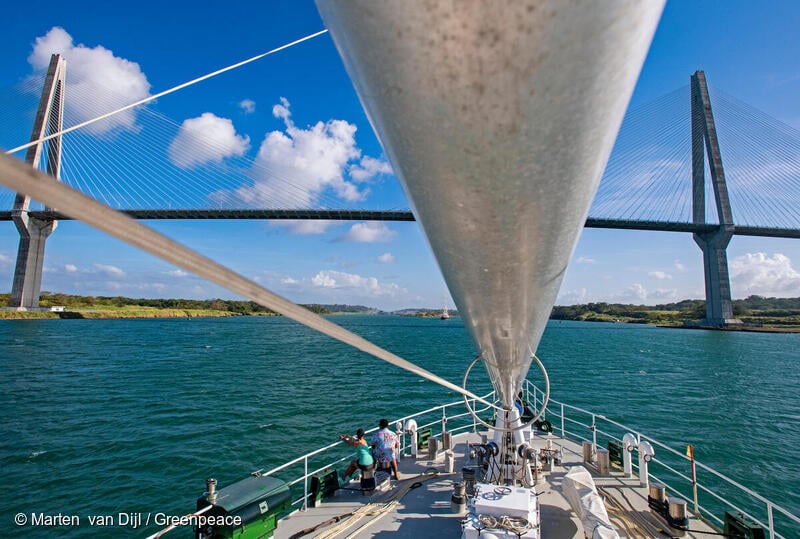
The Rainbow Warrior crosses the Panama Canal. The Greenpeace ship on its way to the Pacific to bear witness to the deep sea mining industry, part of the ongoing ‘Protect the Oceans’ campaign. © Marten van Dijl / Greenpeace
The Panama Canal is a magnificent hydraulic engineering project. The whole Canal has a total of 6 locks – 3 locks up, 3 down per transit. The lock can lift the ships up to 26 meters. The lock can accommodate 3 small and medium-sized ships or a large container ship at one time. The highest point of the Canal is Gatun Lake. We crossed the Panama Canal from sunset to starry night. Most of the crew stayed up and seized the moment to enjoy this special experience.
When we first entered the Canal, we passed through wetlands and bushes on the riverbank. A lot of us had a binocular at hand, hoping to spot wildlife. There were cranes and many other waterfowls. All of a sudden, our onboard photographer Marten shouted, “I saw a crocodile!”
I took his binoculars and saw a crocodile enjoying the last sunshine of the day, sunbathing on the riverbank with its mouth wide open. I still couldn’t believe my eyes after looking at it for a while.

The Rainbow Warrior crosses the Panama Canal. © Marten van Dijl / Greenpeace
Going through the locks was quite an experience. First, we ascended in 3 locks. We were locked in the locks with a small private cruise ship and a yacht. To enter the locks, 4 mules (tug trains) worked together to pull the 4 corners of the ship with steel cables, slowly dragging the ship forward. When the gates closed, they poured in the water and raised the water levels. When they attached cables onto the ship, 11 Canal staff came onboard to secure the cables. We were extra cautious for this due to the pandemic. Everyone wore masks, hid inside the cabins, or went to the top of the ship (Monkey Island) to avoid contact with the Canal staff.
When we woke up the next morning, we were already on the other side of the Canal. We passed the canal smoothly without being attacked by the notorious Canal mosquitoes. Everyone was happy. After the crew had done maintenance of masts, we officially embarked on a trip into the Pacific Ocean.
Dolphin encounters
It was the second day of our voyage in the Pacific, and the waters were calm. It had been super sunny every day. We started seeing more wildlife including dolphins, sea turtles, and even tuna jumping out of the water. In the Caribbean, we also encountered wildlife, such as flying fish and all kinds of seabirds, including pelicans and boobies. During the few days of strong winds and waves, some flying fish even jumped onto the boat. When we found them the next morning, they were already dried and dead.

Spinner dolphins are seen close to the Rainbow Warrior in the Pacific Ocean. © Marten van Dijl / Greenpeace
This is the first time I saw wild dolphins in my life. They are such motivations for Protect the Oceans work! It makes me deeply proud of what I do to hopefully protect their home. So far, we have encountered two kinds of dolphins: spotted dolphin and spinner dolphin. The spotted dolphins surfed in a group of 3 or 4 at the bow of the ship. Everyone was overjoyed.
The spinner dolphins show up from time to time. Sometimes we would even see groups of spinning dolphins, tuna, and seabirds hovering in a specific area of the sea. There must’ve been a feast for them!
The sea turtles pop out of the water from time to time. Their shells are round and brilliant, like gems on the surface of the sea. My Dutch colleagues were particularly excited about the turtles. In Taiwan, we also have a good population of sea turtles around the island. As long as we continue to protect our marine environment, reduce ghost nets and destructive fishing activities, they will always be treasures of our oceans.

An Olive Ridley sea turtle is seen from a RHIB launched from the Rainbow Warrior in the Pacific. © Marten van Dijl / Greenpeace
This blog is a part of an ongoing series, “LIVE from the Pacific.”
